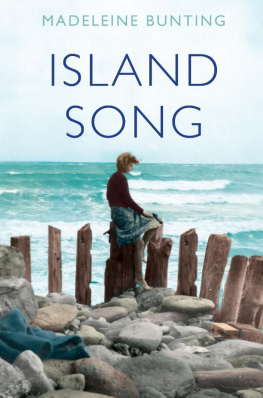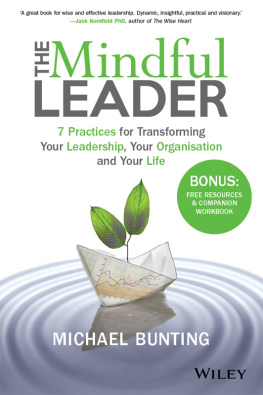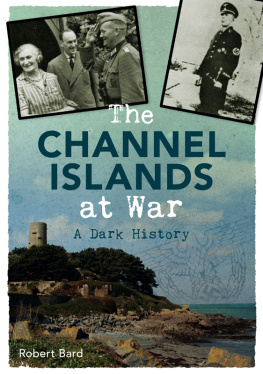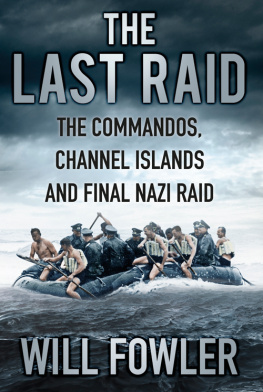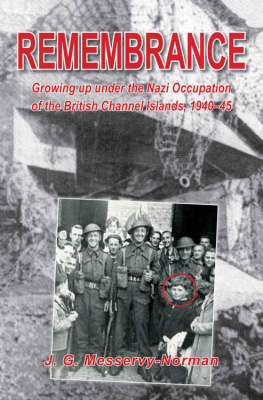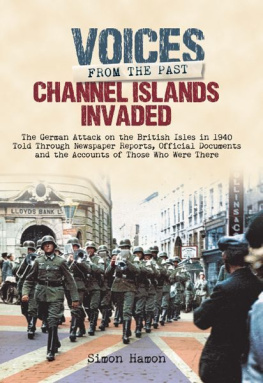Contents
About the Book
When the Germans arrived on the Channel Islands after the defeat of France in the summer of 1940, they and the islanders agreed that it would be a Model Occupation. But as the war dragged on and Britain appeared to abandon the islands to their fate, so features of Nazi occupation already widespread throughout Europe emerged. There were love affairs between island women and German soldiers, betrayals and black marketeering, individual acts of resistance, feats of courage and endurance. Every islander was faced with uncomfortable choices: where did patriotism end and self-preservation begin? What moral obligation did they have to the thousands of emaciated and ill-treated slave labourers the Nazis brought among them to build an impregnable ring of defences around the islands?
About the Author
Madeleine Bunting was born in North Yorkshire. After studying history at Corpus Christi College, Cambridge, she won a Knox postgraduate fellowship to study and teach history at Harvard University. She worked for an independent television production company before joining the Guardian as a reporter in 1989. After a period as a leader writer, she is now a columnist. She has won several awards for her journalism and is a regular broadcaster. She has three children and lives in London.
I am full of admiration for this book. By careful research and a sensitive use of light and shade, Ms Bunting holds the readers attention through an uncomfortable passage in our history and one which we have been most reluctant to inform ourselves.
Alan Clark, Guardian
Excellently researched... This book... is an important historical document, if an uncomfortable one, in the understanding of our national character.
John Mortimer, Sunday Times
The question is often asked: what would have happened if the Nazis had occupied Britain? Would most of us have acquiesced in collaboration, as, for instance, the French did? To a limited extent we know the answers, because the Channel Islands were occupied by the Nazis for almost five years. And any doubts on the matter have now been resolved by Madeleine Buntings excellent book, which is thoroughly unflinching, fair-minded, humane and sensitive.
Paul Johnson, Evening Standard
The chill which creeps over us while following this chronicle, a blend of smoothly accomplished narrative and pungent historical analysis, derives from Madeleine Buntings unemotional clarity in weighing the evidence.
Jonathan Keates, Observer
Scholarly and immensely readable.
Jack Higgins, Mail on Sunday
A scrupulously fair account of life under occupation.
Kirsty Milne, New Statesman and Society
Illustrations
. Guernseymen in St Peter Port in 1939, about to embark for the UK to volunteer for the Forces. (Carel Toms Collection)
. Islanders gather at St Helier harbour to wave off reservists called up for the British Forces on 1 September 1939. (Jersey Evening Post)
. The Bailiff of Jersey, Alexander Coutanche, and island officials greet Luftwaffe officers at Jersey airport on 1 July 1940. (Carel Toms Collection)
. A Nazi propaganda film at the Gaumont Palace, Guernsey, in August 1941. (Carel Toms Collection)
. A Guernsey policeman opens the car door for German staff officers in St Peter Port, 1940. (Bundesarchiv)
. An islander nervously receives orders from a German officer in Gorey Harbour, Jersey, 1941. (Bundesarchiv)
. Identity card of Raymond Falla, Guernseys Minister of Agriculture and a member of the Controlling Committee. (Carel Toms Collection)
. Tight rationing was introduced, and controls imposed on every aspect of food production. (Carel Toms Collection)
. Initially at least, to the German soldiers a posting to the Channel Islands was more like a holiday than fighting a war. (Johann Miesen; Eric Tostevin)
. German officer Hans Stumpf on Jersey. (Hans Stumpf)
. Stumpfs best friend with Stumpfs girlfriend and her sister. (Hans Stumpf)
. A young Jersey girl on the best of terms with three German officers. (Hans Stumpf)
. Baron von Aufsess. (Imperial War Museum)
. Island women found the attractions of the Germans difficult to resist. (Bundesarchiv)
. Therese Steiner, photographed in Vienna before she fled the Nazis and sought refuge in England. (Karl Steiner)
. Therese Steiner with the Potts family on Sark, summer 1939. (Guernsey Evening Press)
. Marianne Grunfeld as a child in Berlin. (Ernst Grunfeld)
. Sybil Hathaway, Dame of Sark, greets a German officer outside her home, the Seigneurie. (Bundesarchiv)
. Ambrose Sherwill, with his wife May, at Buckingham Palace to receive his post-war honours. (Rollo Sherwill)
. Alexander Coutanche and Victor Carey negotiate with Red Cross representatives in a conference chaired by Admiral Friedrich Hffmeier. (Imperial War Museum)
. Queuing for food supplies in St Peter Port. (Carel Toms Collection)
. Old metal biscuit tins were made into saucepans, a meagre light came from a Brasso can, and a butter churn from a glass preserving jar. (Jersey Museums Service)
. With islanders facing starvation, the British government finally agreed in November 1944 to allow the Red Cross to ship in parcels of food. (Jersey Evening Post)
. By 1943 sixteen thousand foreign workers had arrived to work on the construction of the islands fortifications. (Bundesarchiv)
. Former prisoners Vasilly Marempolsky and Gasulla Sole, reunited at a post-war Liberation anniversary on Jersey. (Vasilly Marempolsky)
. Georgi Kondakov and Kirill Nevrov in Orel, 1993. (Madeleine Bunting)
. Georgi Kondakovs resistance membership certificate, retrieved from the KGB in the mid-eighties. (Georgi Kondakov)
. Kirill Nevrov in Paris, 1944. (Kirill Nevrov)
. Alexei Ikonnikov in 1944. (Alexei Ikonnikov)
. Ivan Kalganov in 1993. (Madeleine Bunting)
. Otto Spehr, believed to be the last surviving member of SS Baubrigade I, which came to Alderney in March 1943. (Guardian/Reuters)
. Jersey boy Bernard Hassall tries on a German helmet in 1941. (Bernard Hassall)
. Joe Miere in 1994. (Roger Hutchings)
. A V for Victory sign in a St Helier street. (Jersey Evening Post)
. The announcement of a 25 reward for information leading to the conviction of painters of V signs. (Carel Toms Collection)
. Stella Perkins in 1942. (Stella Perkins)
. The Jersey resistance movement, with German deserter Paul Mlbach. (Jersey Underground Museum)
. Jersey cinema projectionist Stanley Green smuggled a film and camera into Buchenwald, where he took the only photographs to be taken by an inmate. (Stanley Green)
. Liberation. Troops arrive to a rapturous welcome, 9 May 1945. (Hulton-Deutsch)
. German prisoners of war being loaded onto ships bound for England. (Jersey Museums Service)
. Dolly and Willi Joanknecht on Jersey during the Occupation. (Dolly and Willi Joanknecht)
. Dolly and her son Tony wave goodbye to Willi as he leaves for England in 1946. (Dolly and Willi Joanknecht)
. Dolly and Willi marry in England in August 1947. (Dolly and Willi Joanknecht)
. Russian slave workers graves on Alderney (The Royal Air Force Museum)
. British investigators with a false-bottomed coffin, which could be used for repeated burials. (
Next page

